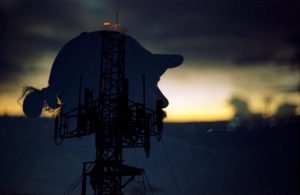
Starlink: Revolutionizing Global Internet Connectivity with Satellite Technology
Starlink is a satellite internet constellation developed by SpaceX, a private aerospace manufacturer and space transport services company founded by Elon Musk. The project aims to provide high-speed, low-latency internet connectivity worldwide, especially in areas where traditional internet infrastructure is lacking. With its innovative technology and ambitious goals, Starlink is poised to revolutionize the way we access the internet.
The concept of Starlink was first announced in 2015, and since then, SpaceX has been working tirelessly to develop and launch the satellite constellation. The company has already launched over 2,000 satellites into orbit and plans to deploy a total of 42,000 satellites in the coming years. Each satellite is equipped with advanced technology, including Hall effect thrusters, star trackers, and a compact antenna system.
How Starlink Works
Starlink uses a constellation of low-Earth orbit (LEO) satellites to provide internet connectivity. The satellites are positioned at an altitude of around 550 kilometers, which is much lower than traditional geostationary satellites. This lower altitude enables Starlink to offer faster internet speeds and lower latency, making it suitable for real-time applications such as online gaming, video streaming, and virtual meetings.
When a user requests internet access, their device sends a signal to the nearest Starlink satellite, which then relays the signal to a ground station. The ground station forwards the signal to the destination server, and the response is sent back to the user through the same satellite. This process happens rapidly, with latency as low as 20 milliseconds, which is comparable to traditional fiber-optic internet.
Benefits of Starlink
Starlink offers several benefits, including global coverage, high-speed internet, and low latency. The satellite constellation can provide internet access to remote and underserved areas, bridging the digital divide and enabling people to access essential services, education, and economic opportunities. Starlink can also be used for emergency response and disaster relief, providing critical communication services when traditional infrastructure is damaged or destroyed.
In addition, Starlink has the potential to disrupt the traditional telecommunications industry by offering a new, competitive option for internet services. The company plans to offer a range of pricing plans, including a consumer plan for $99 per month, making high-speed internet more accessible to a wider audience.
Challenges and Controversies
While Starlink has the potential to revolutionize global internet connectivity, it also faces several challenges and controversies. One of the main concerns is the risk of satellite collisions and space debris. With thousands of satellites in orbit, there is a risk of collisions, which could generate more debris and exacerbate the problem.
Another concern is the impact of Starlink on the night sky and astronomy. The satellites can reflect sunlight, causing bright streaks in the sky and interfering with astronomical observations. SpaceX has been working to mitigate this issue by developing special coatings and adjusting the satellite’s orientation to reduce reflectivity.
Finally, there are concerns about the environmental impact of launching and operating such a large number of satellites. The production and launch of satellites require significant resources and energy, and the disposal of satellites at the end of their life can contribute to space debris and pollution.
Conclusion
In conclusion, Starlink is a groundbreaking project that has the potential to revolutionize global internet connectivity. With its innovative technology and ambitious goals, SpaceX is poised to make a significant impact on the telecommunications industry and bridge the digital divide. However, the project also faces several challenges and controversies, and it is essential to address these concerns to ensure the long-term sustainability and success of Starlink.




